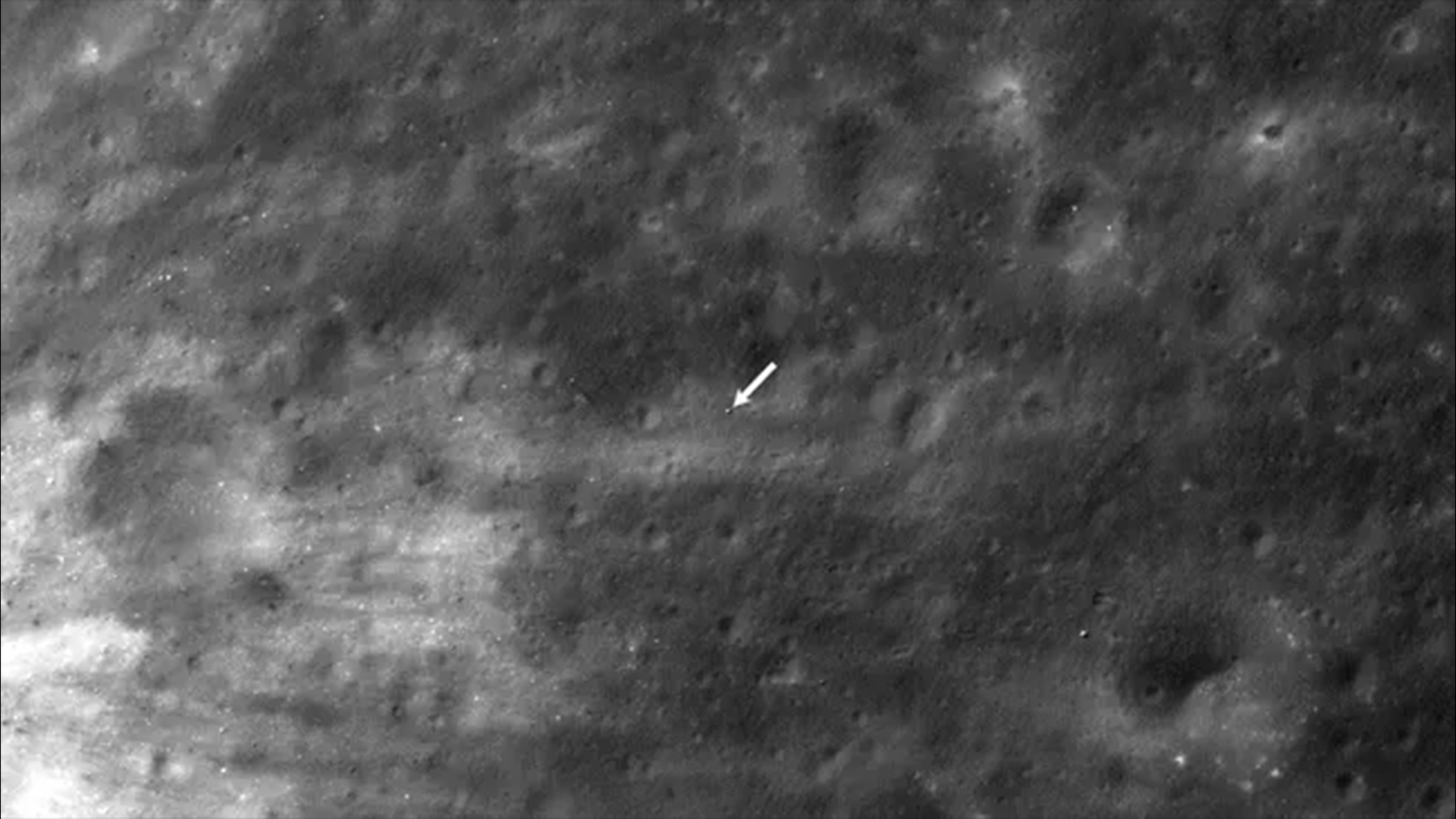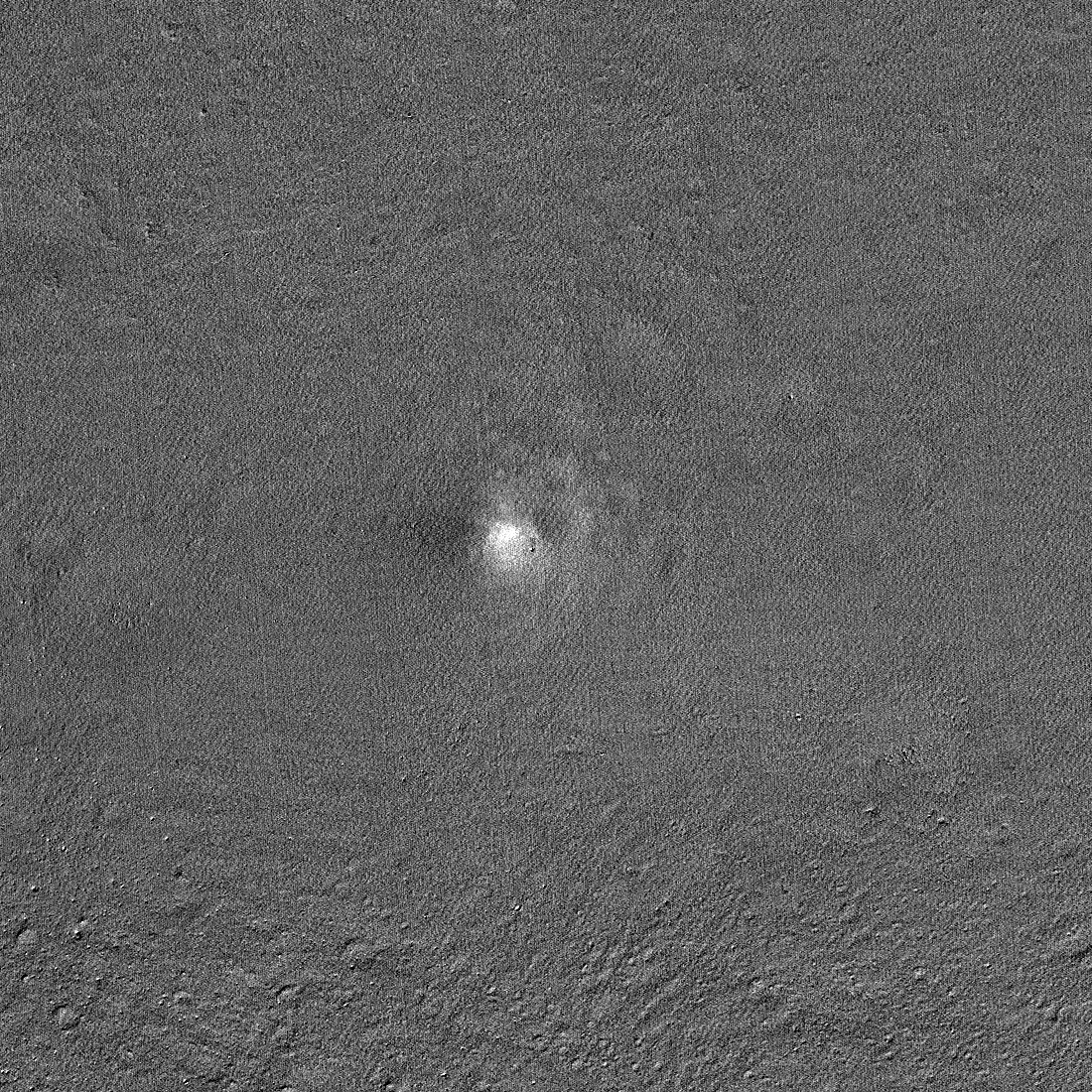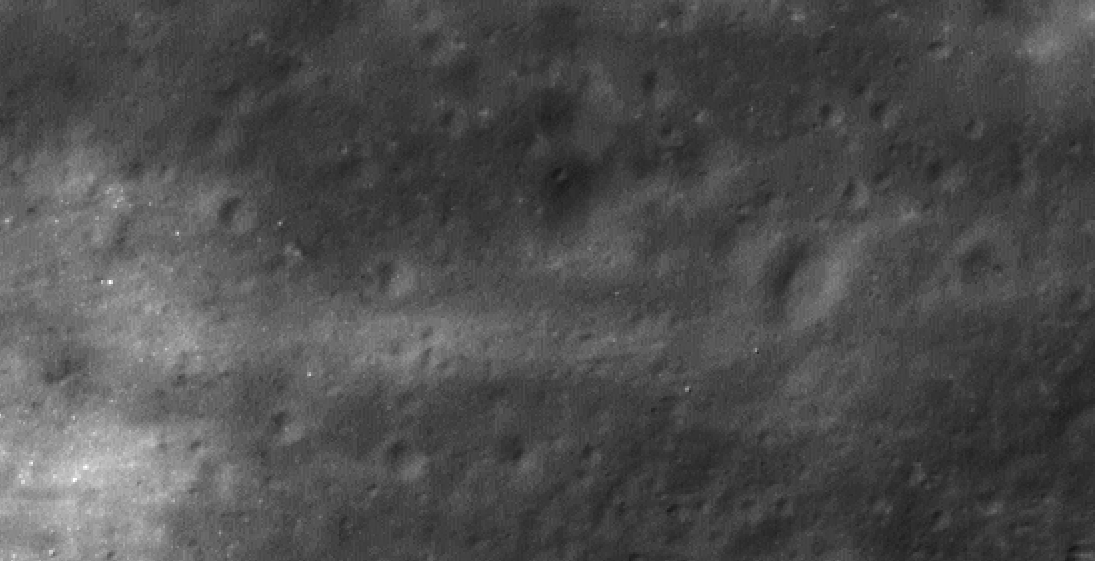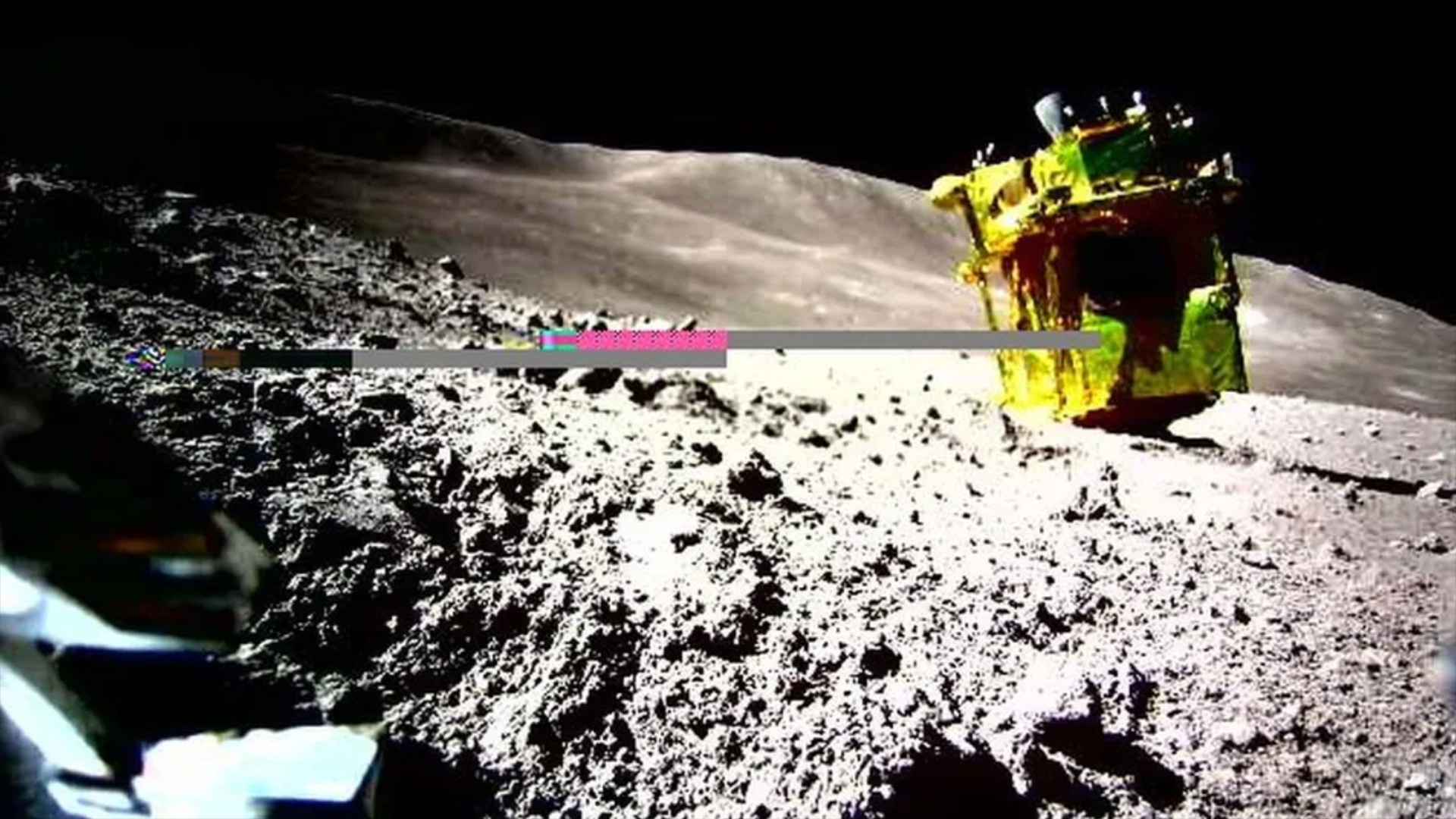Pinpoint landing: NASA orbiter spies Japan's revived SLIM moon lander on lunar surface
NASA's images show SLIM's landing site both before and after the probe's touchdown.

A NASA orbiter caught sight of Japan's SLIM moon lander on the lunar surface after its historic touchdown.
SLIM, or the Smart Lander for Investigating Moon, is operated by the Japan Aerospace Exploration Agency (JAXA). It touched down on the moon in a precision landing on Jan. 19, making Japan the fifth country to make a soft landing on the lunar surface behind India, China, the United States and Russia (then the Soviet Union).
From its orbit 50 miles (80 km) above the moon's surface, NASA's Lunar Reconnaissance Orbiter (LRO) was able to see SLIM resting at its landing site. "Bright streaks on the left side of the image are rocky material ejected from the nearby, relatively young Shioli crater," NASA's Goddard Space Flight Center, which manages LRO, wrote in a statement.
NASA's images show SLIM's landing site both before and after the probe's touchdown. One of the images, seen below, is a composite that removes features that are the same in both the before-landing and after-landing images. In turn, it allows us to see changes in reflectance on the lunar surface, caused by the lander's engine exhaust, to stand out.
SLIM accomplished its main goal of landing at a chosen site with near-pinpoint accuracy, touching down within 328 feet (100 meters) of its target despite ending up upside down due to an engine failure during descent.
Because of its orientation, SLIM was unable to use its solar panels to generate electricity for nine days, forcing the probe to rely fully on its battery. However, on Sunday (Jan. 28), Japan finally re-established contact with the rover, likely thanks to a change in the angle of incoming sunlight. This will allow SLIM to continue its mission of studying the composition of nearby moon rocks until the next lunar night sets in on Feb. 1.
In addition to sticking its landing, SLIM was able to deploy two mini-rovers it carried to the moon, called LEV-1 ("Lunar Excursion Vehicle" 1) and LEV-2. Both are operating as planned, and the ball-like LEV-2 was even able to snap a picture of its upside-down host.
Get the world’s most fascinating discoveries delivered straight to your inbox.
Originally posted on Space.com.
Brett is a science and technology journalist who is curious about emerging concepts in spaceflight and aerospace, alternative launch concepts, anti-satellite technologies, and uncrewed systems. Brett's work has appeared on The War Zone at TheDrive.com, Popular Science, the History Channel, Science Discovery, and more. Brett has English degrees from Clemson University and the University of North Carolina at Charlotte. In his free time, Brett is a working musician, a hobbyist electronics engineer and cosplayer, an avid LEGO fan, and enjoys hiking and camping throughout the Appalachian Mountains with his wife and two children.
 Live Science Plus
Live Science Plus









